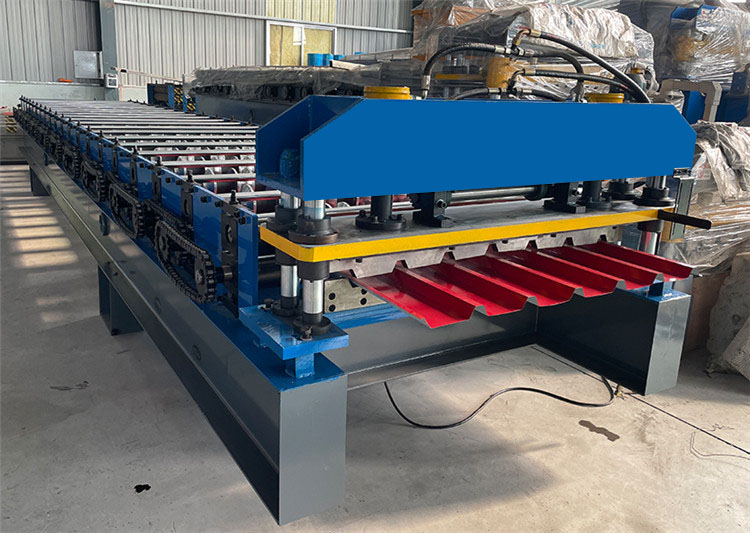Efficient Production Solutions for Standing Seam Roof Panel Manufacturing Systems
Understanding the Standing Seam Roll Former A Key Tool in Metal Roofing
The construction industry has continuously evolved over the years, arriving at innovative methods and tools to enhance efficiency and sustainability. Among these innovations, the standing seam roll former stands out as a critical element in the production of metal roofing systems. This article delves into what a standing seam roll former is, how it functions, its benefits, and its applications in modern construction.
What is a Standing Seam Roll Former?
A standing seam roll former is a specialized piece of machinery designed to create standing seam metal roofing panels. These panels are characterized by vertical seams that are raised above the roofing surface, which contributes to both aesthetic appeal and functional integrity. The roll former shapes metal sheets by passing them through a series of rollers, ensuring the metal is precisely formed to meet the specific profiles required for standing seam roofing.
How Does it Work?
The operation of a standing seam roll former involves several steps. First, a metal coil, typically made of aluminum or galvanized steel, is fed into the roll former. The machine consists of multiple sets of rollers that progressively shape the metal as it moves through the system. These rollers bend and form the metal according to the desired profile, often incorporating grooves and seams that will interlock once installed.
Once the panels are formed, they are cut to the required lengths, typically in line with the specifications of the building or project. The equipment can also include features for adding additional elements, such as clips or special fittings that facilitate the installation process. Modern roll formers are often equipped with computer numerical control (CNC) technology, allowing for precise adjustments and customization based on the project’s requirements.
Benefits of Standing Seam Roofing
Standing seam roofing offers numerous advantages over traditional roofing systems. One of the most significant benefits is its weather resistance. The elevated seams help to direct water away from the building, minimizing the risk of leaks and water damage. This is particularly beneficial in regions prone to heavy rainfall or snowfall.
standing seam roll former

Another advantage is durability. Metal roofing is known for its longevity, often lasting 50 years or more with minimal maintenance. The materials used in standing seam roofs are also resistant to fading, cracking, and corrosion, making them suitable for a wide range of climates.
Energy efficiency is another compelling benefit. Standing seam roofing is often reflective, which can help in reducing heat absorption, thus lowering cooling costs in warm climates. Many standing seam systems can also accommodate insulation, further enhancing their energy efficiency.
Additionally, standing seam roofs are aesthetically versatile. They can be customized in various colors and finishes, allowing for a wide range of design options that can complement modern architectural styles.
Applications in Construction
Standing seam roll formers are indispensable in various construction applications. They are commonly used in commercial buildings, industrial facilities, and residential homes. The ability to produce custom lengths and profiles means that contractors can use standing seam roofing for unique designs and challenging installations.
Moreover, as the construction industry moves towards more sustainable practices, the demand for metal roofing systems is rising, further increasing the relevance of standing seam roll formers. These machines enable manufacturers to produce eco-friendly products that contribute to greener building standards.
Conclusion
In summary, the standing seam roll former is a vital tool in the production of contemporary metal roofing systems. Its ability to create highly durable, weather-resistant, and visually appealing panels makes it a preferred choice for builders and architects alike. As the industry continues to evolve, the standing seam roll former will undoubtedly play a significant role in shaping the future of construction, marrying aesthetics with functionality to meet the growing demands for efficiency and sustainability.
-
Roof Panel Machines: Buying Guide, Types, and PricingNewsJul.04, 2025
-
Purlin Machines: Types, Features, and Pricing GuideNewsJul.04, 2025
-
Metal Embossing Machines: Types, Applications, and Buying GuideNewsJul.04, 2025
-
Gutter Machines: Features, Types, and Cost BreakdownNewsJul.04, 2025
-
Cut to Length Line: Overview, Equipment, and Buying GuideNewsJul.04, 2025
-
Auto Stacker: Features, Applications, and Cost BreakdownNewsJul.04, 2025
-
Top Drywall Profile Machine Models for SaleNewsJun.05, 2025








